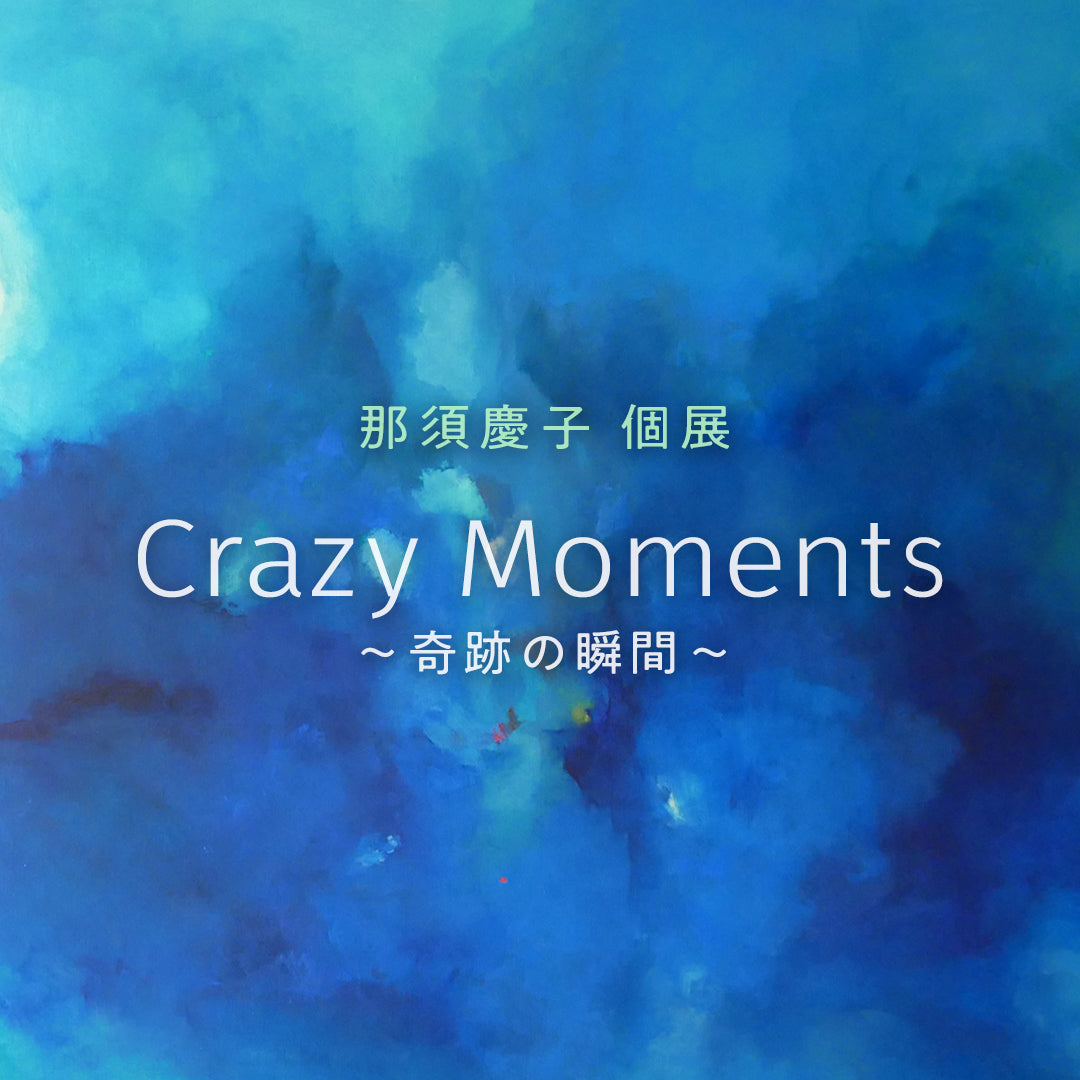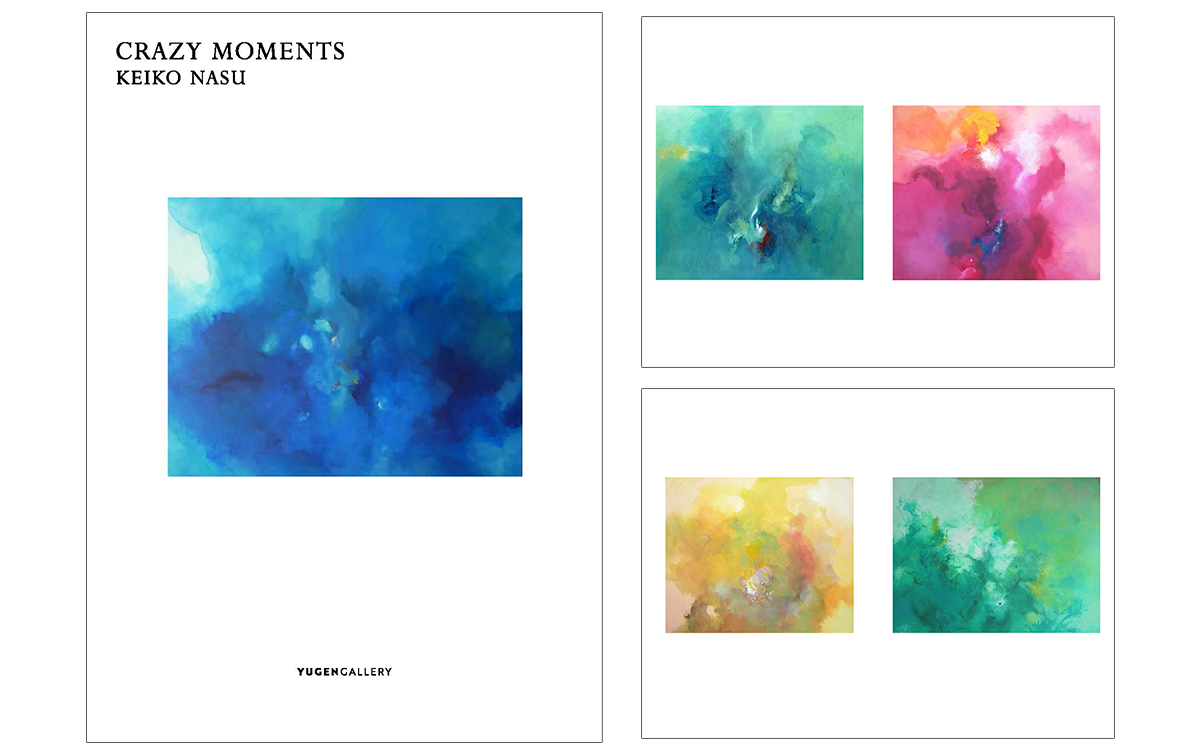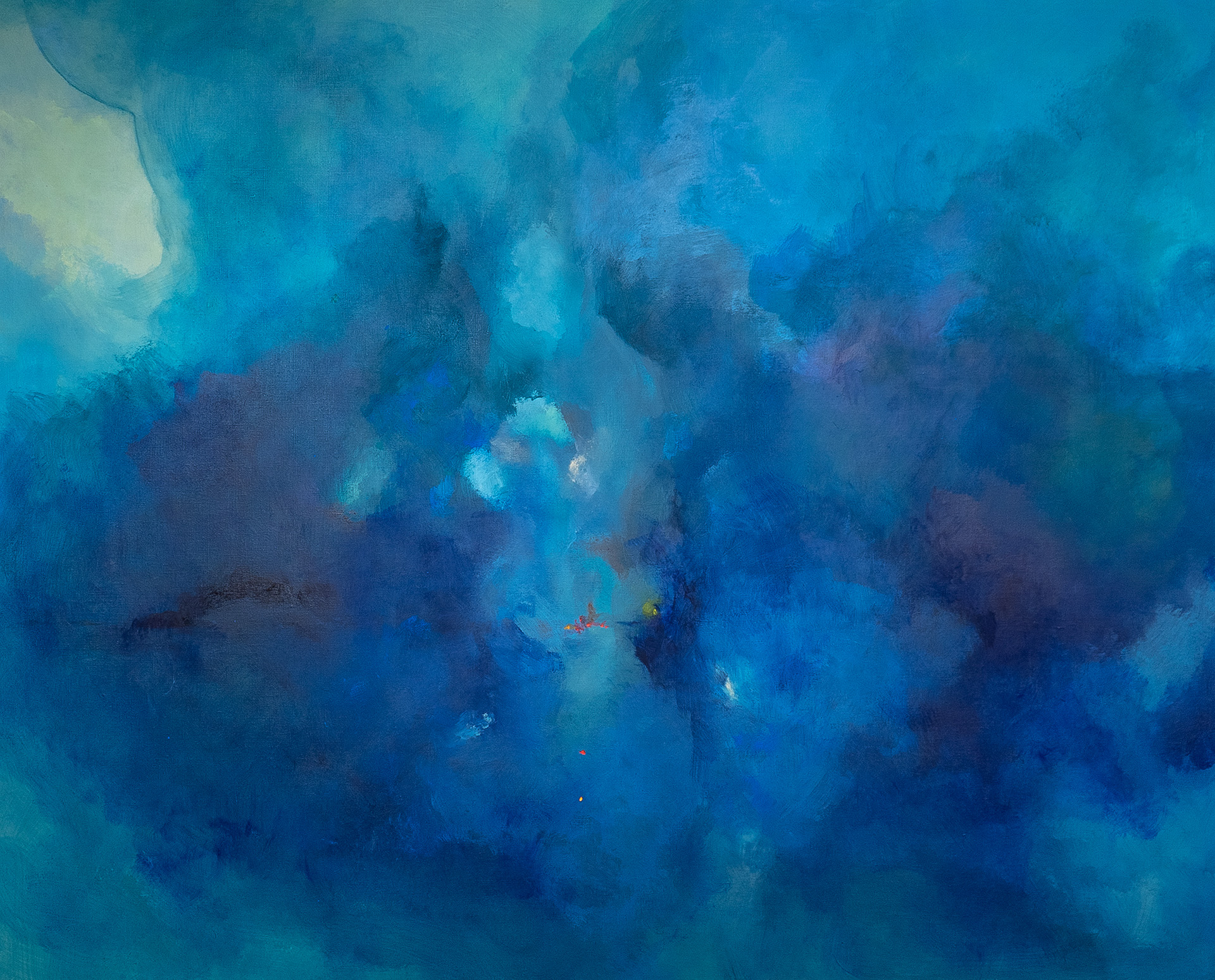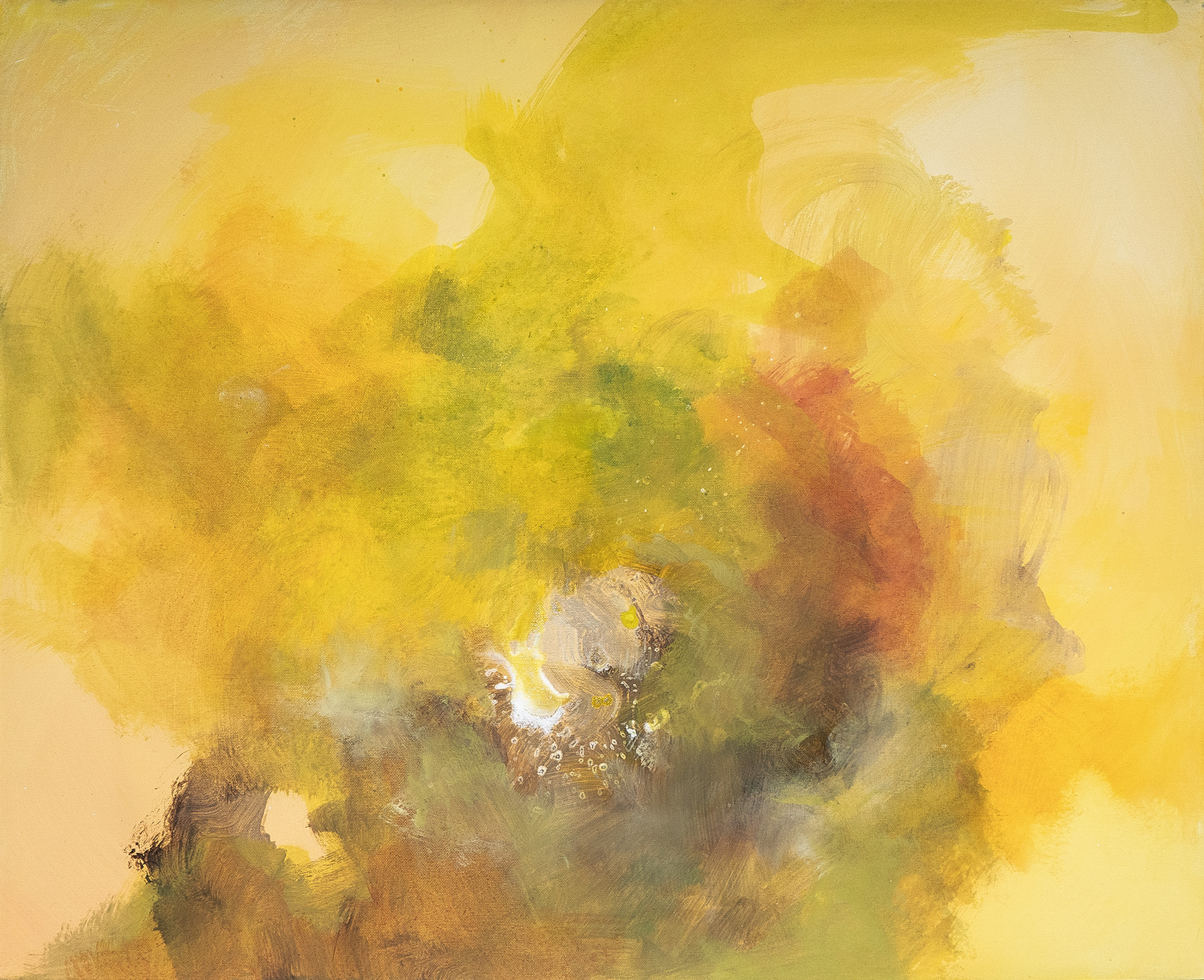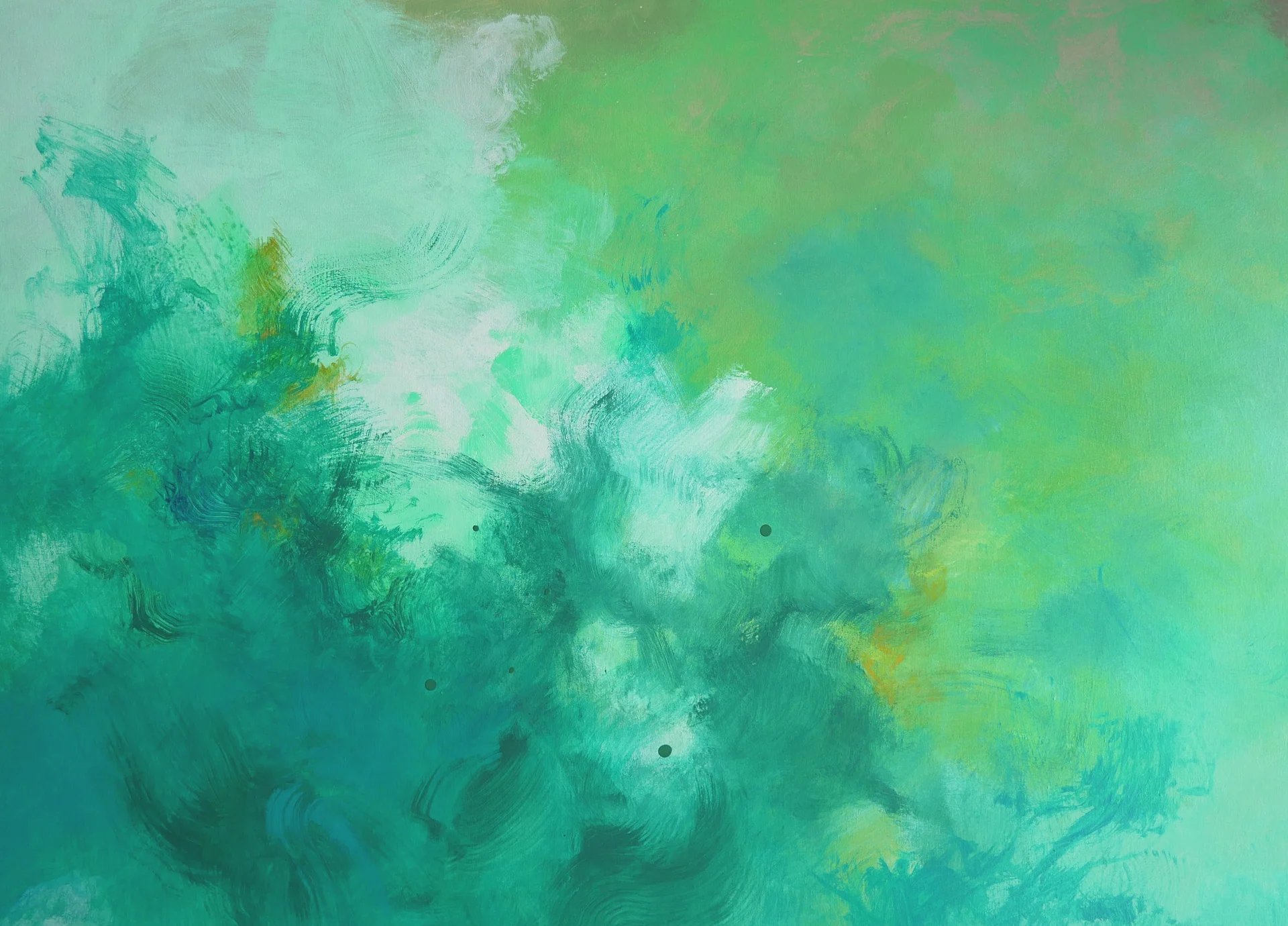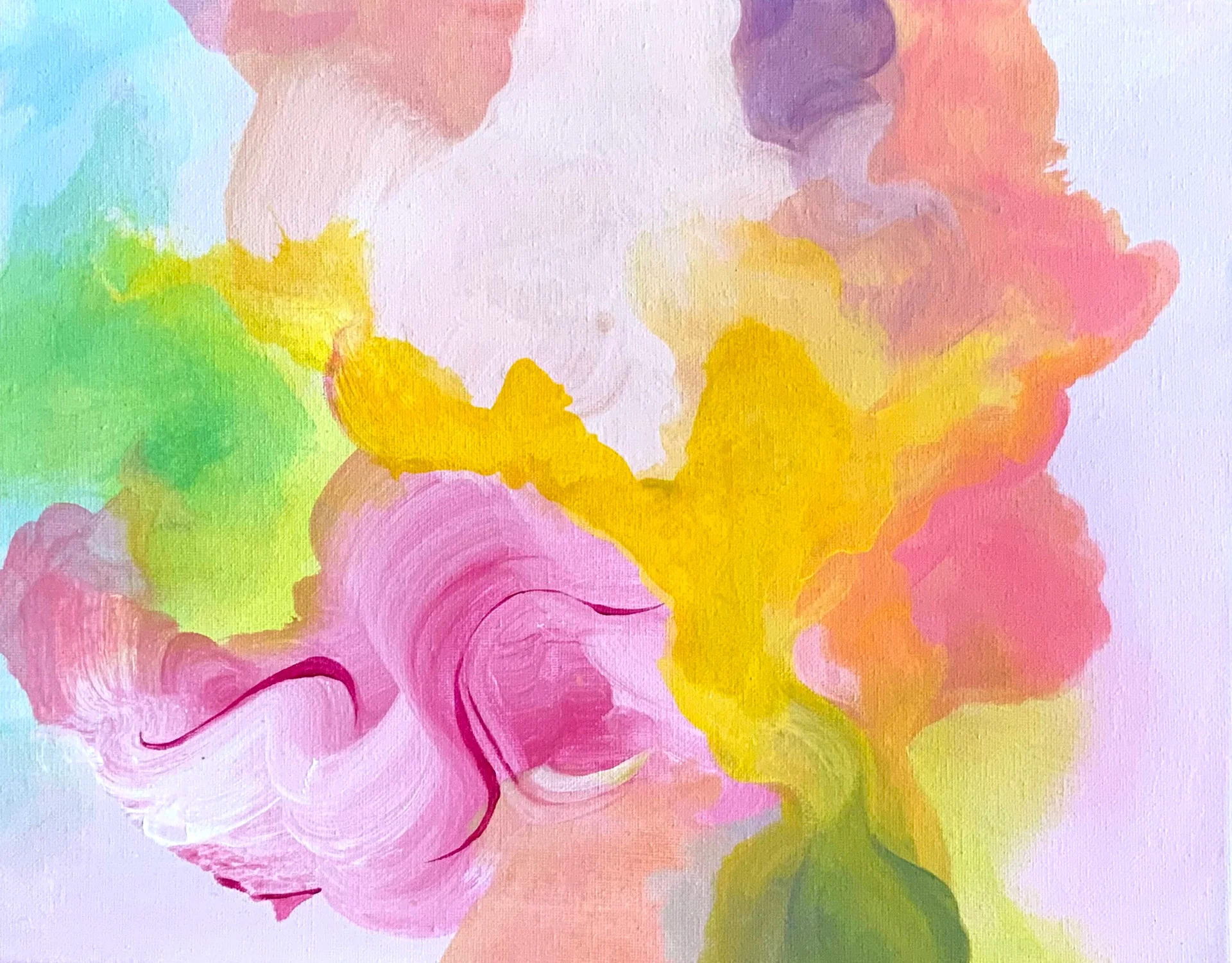Connecting colors without focusing
Keiko Nasu began to distinguish herself through her commercial illustrations for advertisements and magazines while studying at Musashino Art University, and has continued to engage in a wide range of activities, including selecting music for radio and events.
Born to a poet father and a hat designer mother, Nasu's drawings were highly praised from an early age, including being awarded prizes in children's magazines, but he says that at the time he aspired to be an entomologist rather than an artist. He was interested in peeling the bark off the eucalyptus trees in his garden to look at their insides, and observing leaf veins and insect scales under a microscope, and was moved by the patterns created by nature. As a sickly child, he spent a lot of time in bed, and would stare at stains on the ceiling to expand his imagination, so some of Nasu's background in abstract art can be seen from that early age.
Disagreement with clarity
In parallel with his representational works, such as portraits of artists that are synonymous with Nasu, which show the influence of British rock, which he was attracted to in his adolescence for its "fashionable and cosmic worldview," he has been working on abstract expressionism based on the concept of "no focus." This is influenced by his interest in patterns created by nature, as well as the words he received from his father, such as letters from time to time. He felt that a world beyond the single line written by his father, a poet, was spreading out.
"These days, social media is full of straightforward words. Even in paintings, there is a tendency to think that the only right thing to do is to accurately capture the shape. I personally love monochrome works, and as an artist, the ideal is to use as few lines as possible and to express things simply. But I feel uncomfortable with a world that only strives for clarity." This is what has led Nasu to turn to abstract expressionism.
As a child, Nasu attended church on weekends and was taught that in the end, all human beings would understand each other. However, he learned that the world is connected by incomprehension, not just in politics and religion, but also in everyday interactions with other people. "Even if we have similar ideas, even the slightest difference can cut off communication. Non-focus is a way to overcome this incomprehension."
Colors layered on the canvas
In this exhibition, Crazy Moments, we will present 13 works in which the canvas is primed and then layered with multiple layers of color. The layers of color created by acrylic paint are different from the bleeding of watercolors. The colors hidden deep within the colors suggest that there is a complexity in all phenomena that cannot be easily dismissed. Here, colors intermingle and the miracle of the world where all living things intermingle is revealed.
Nasu explains his motivation for creating this work by saying that he is "just interested in" the state of the human mind, something like the stars that appear behind our eyelids when we close our eyes, or the inexplicable scenery that unfolds before us in the darkness before we fall asleep.
The title of this exhibition was chosen with the hope that viewers will empathize with the artist's "maddening" thoughts, time, and atmosphere from the moment he puts his brush down on the canvas until the work is completed and he stops. Sharing the overlapping colors and time is a realization of life and a joy. The differences in the colors that emerge depending on the viewer represent the acceptance of the freedom of life in all directions.
This is a consistent approach from Nasu, who has produced works that emphasize the prioritization of life whenever conflicts arise in the world. He captures the extremely complex world with a love for all living things, which is the exact opposite of the word "crazy."
A world where colors intertwine and connect
People have different memories of a single event, and different layers of time pile up on the same place. A world in which these are inextricably connected takes on unknown aspects with just a slight shift in time or perspective. The reality required in the modern world is to focus on such complexity and not simplify it. This allows us to discover that within the depths of color, there are other colors to be found.
Just as the artist portrays the state of mind, the viewer also uses art to look into the pure colors deep within themselves. Nasu's work appeals to the viewer to pay attention to the differences in colors in order to maintain the freedom of life in a world where we cannot understand each other, and shows that the more colors mix, the more pure colors emerge.

